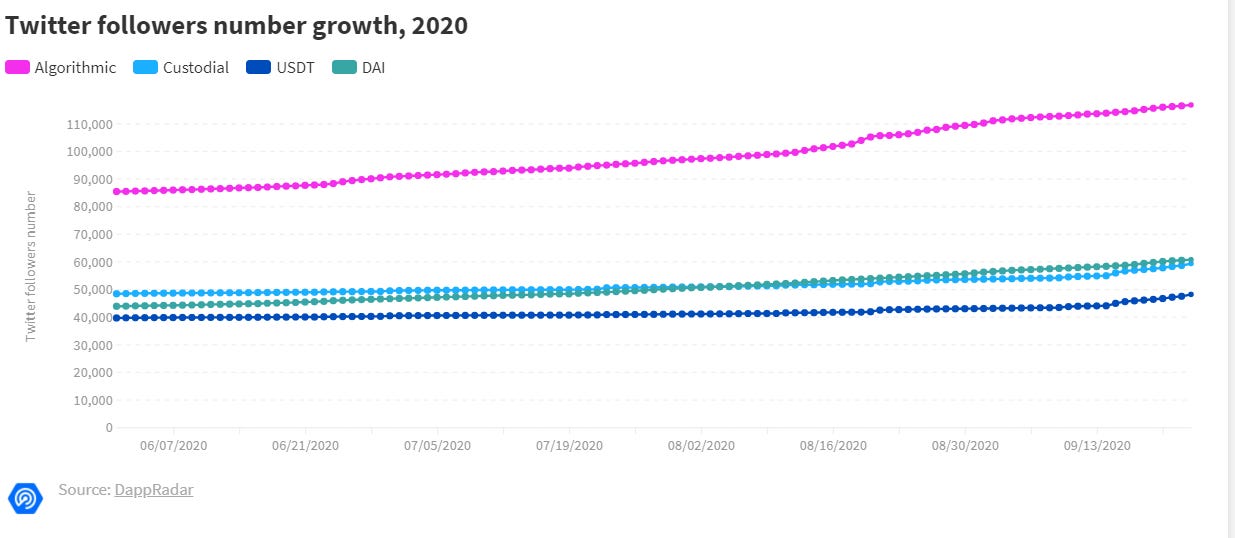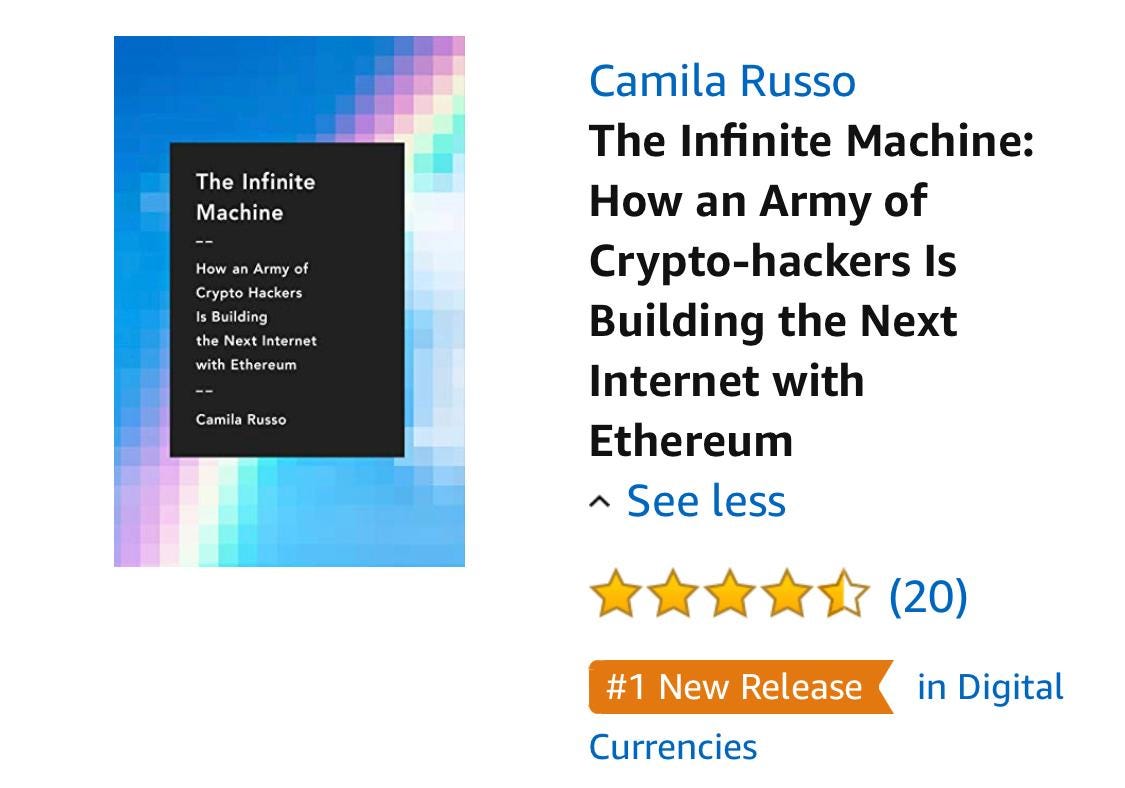The State of Stablecoins in DeFi: A Deep Dive by DappRadar
DappRadar's exclusive report on the growth and use of stable assets in decentralized finance.
Hello Defiers! Stablecoins have become the backbone of crypto, with volume, total market capitalization and growth outpacing coins of most blockchain networks.
DappRadar has produced a report on stable digital assets, published exclusively on The Defiant, to better understand the state of one of the most fundamental pieces of the crypto economy.
🎙Listen to this week’s podcast episode with Dan & Clinton of YAM:

📺 Check Out The Pilot Episode of The Defiant’s DeFi 101 Series!
DeFi 101 will serve as an introduction into decentralized finance, with 30 planned episodes. This is not intended to be the first episode of the series but rather a standalone episode to test the ground for the future of this series. So feel free provide feedback. The video was produced in partnership with Alp Gasimov, Robin Schmidt of Harmony Protocol and DeFi Tutorials with DeFi Dad.
🙌 Together with Zerion, a simple interface to access and use decentralized finance, Perpetual Protocol, which provides decentralized perpetual contracts for any asset, and HackAtom V, a two-week virtual hackathon organized by Cosmos.


The Rise and Rise of Stablecoins in DeFi
Stablecoins are one of the fastest-growing asset types in the crypto world. The purpose of these cryptocurrencies is to track a particular peg (usually the dollar) minimizing volatility and providing a convenient unit for transacting.
They have become the lifeblood of the DeFi ecosystem and may look to take over other sectors like remittance and gaming. While differing in implementation they look to avoid violent price fluctuations and enable users to transact in units more familiar to them from traditional finance. Stablecoins have become the bridge between traditional and crypto economies.
The different flavors of stability
Stablecoins currently account for over $18B in total market cap across different blockchains.

https://public.flourish.studio/visualisation/3828410/
There are two main types of stablecoins: custodial backed tokens and algorithmic coins. The first, true to their name, use a centrally stored reserve of fiat assets to guarantee the peg. The tokens are (in theory) backed 1:1 and as such should not deviate from it. The most popular of these are USDT, USDC, and now BUSD.
The algorithmic approach often also uses collateral (in the form of digital assets and not fiat), but unlike custodial backed tokens, it is operated and stabilized through smart contracts and algorithms. It uses economic incentives to motivate arbitrageurs to maintain the peg of the stablecoin. Dai is the most famous stablecoin in the market, but there are others like RSR, USDX and sUSD. These coins exhibit more volatility and at times struggle to maintain the peg.

A third, but the more abstract type as the concept is still in an experimentation phase, is the CBDC or central bank digital currencies. Worried by the fact that DeFi constructs may displace central banks, governments are looking into issuing their own cryptocurrency assets. While some experiments like the Petro have proved largely unsuccessful, the expected arrival of the digital yuan and other major digital currencies has promise.

https://public.flourish.studio/visualisation/3861780/
The key difference between algorithmic coins and their counterparts is ownership and censorship. The setup for USDT and the like enables the custodial agents to freeze assets and even reverse transactions. While these custodial offerings may have simpler onboarding and their regulated status simplifies their adoption, they present a real contradiction to the decentralization ethos.
Using stablecoins
Stablecoins became a sort of digital cash and as such became useful during risk-off moments in the market, when users wanted to flee to safety but did not want to convert back to fiat. Additionally, leveraging strategies became popular with users.
However, with the near-collapse of MakerDAO in March, it became apparent that stablecoins can have a bigger role in the ecosystem. Their stability feature makes them an interesting diversification instrument, as well as a solid collateral asset.
Prior to the event, MakerDAO’s stablecoin was backed by volatile cryptocurrencies ETH and then BAT. However, these tokens were highly susceptible to market swings, and as March showed when left unbalanced exposed the system to too much risk. At this time, over 42% of Dai is minted from USDC, making it the most popular collateral asset on MakerDAO.
Altcoins are often highly correlated, and as such stablecoins offer a way to reduce risk in the collateral pool.

https://app.flourish.studio/visualisation/3816159/edit
However, with the DeFi yield farming boom stablecoins gained another major utility boost.
The first major governance token distribution utilizing yield farming was done by Compound. The decentralized loan application rewarded users for loaning and borrowing assets with a share of governance tokens (initially) based on the associated yields.
The stablecoins proved highly popular for farmers, and even with high-interest rates, the proposition was profitable. This was in part due to the fact that the underlying assets loaned and borrowed were stable. Once the attention turned to volatile tokens the community was forced to adjust the distribution strategy.
This yield farming strategy catalyzed stablecoin activity. As users utilized the composability of dapps to maximize farming yields multiple dapps became linked in farming transactions. Specifically, exchange stablecoins with minimal slippage became critical, which gave prominence to Curve.

https://app.flourish.studio/visualisation/3825577/edit
Not surprisingly, Curve whose TVL consists mostly of stablecoins suffered least from the price effect, and showed real growth, as opposed to inflation driven appreciation.

https://public.flourish.studio/visualisation/3828020/
Centralized vs Decentralized
While centralized stablecoins come with some baggage they have a much easier time navigating regulatory waters and getting in front of retail users.
As such, USDT and USDC have grown their presence in the DeFi space. For most of the summer, Ethereum was the only meaningful DeFi ecosystem and so the inflow of stablecoins was focused on this blockchain.
In part this can be seen through fees. For example, USDT has been one of the biggest generators of gas fees on the network.

This has made smaller transactions much more expensive. No surprise, the median size of the transaction has grown over the summer. These conditions are much more favorable to whales as they transact in large volumes but hurt retail users.

https://coinmetrics.io/charts/#assets=usdteth_left=TxTfrValMedUSD_zoom=1592870400000,1600646400000
It is thus logical to see that the majority of trading activity using stablecoins occurs on centralized exchanges. Dai as a dapp product has been making headway, but even this stablecoin trades mostly on centralized platforms. High, hard to predict costs, impede the growth of the decentralized ecosystem.

https://public.flourish.studio/visualisation/3826697/
High gas costs have also squeezed a lot of gaming activity from the network, and if the trend persists this will hamstring commercial activity. While cryptocurrencies are now accepted in more and more places, it would make no sense buying a coffee using cryptocurrency if the transaction cost surpassed the cost of the coffee itself.
Relying on the community
While centralized coins may have the current lead in volume, decentralized (algorithmic coins) generate more community engagement.
[the data is collected from https://app.santiment.net/]

https://public.flourish.studio/visualisation/3827745/
Ethereum has created a blueprint for a DeFi ecosystem and one of its core components is a stablecoin generating MakerDAO. Its success as a catalyst of the DeFi sector has led to similar projects springing up on rival networks: Kava, Acala, JUST, and more. The algorithmic coin engages users as loaners, borrowers, arbitrageurs, and legislators. With the trend for governance coins and composability in full swing algorithmic coins make more sense, but it remains to be seen how regulators will respond to their continued growth.
It should also be noted that while algorithmic coins share a similar concept, they use different incentive mechanisms. What makes this particularly interesting is that the decentralized governance component enables the community to respond to market challenges and enact changes.
With traditional currencies, the market is forced to deal with policies passed without its direct involvement. In the case of DAO-based algorithmic stablecoins, the community (at least in theory) can have a direct impact on the policies that affect it.
Looking forward
Stablecoins have become one of the top asset classes in the crypto industry. Their capitalization has surpassed notable Bitcoin forks like Litecoin and Dogecoin, remittance focused projects like XRP, and is gaining ground on Ethereum. The latter could eventually become a problem as it would undermine the incentive principles that support the security of the network.

https://public.flourish.studio/visualisation/3828429/
Still, stablecoins need to move outside of DeFi to gain acceptance as commercial mediums of exchange. For Ethereum, that means dealing with the fees issues and more broadly that entails integrating with retail-facing applications.
MakerDAO has already started the process with its gaming initiative. If Ethereum maintains its lead as the number one dapp network in the industry, MakerDAO should continue to expand its role as a key financial infrastructure project and Dai should see usage growth in the network.
Still, custodial coins should continue to maintain their dominance in the near to midterm future, as the regulated nature makes them a natural bridge with a centralized economy.
The Defiant is a daily newsletter focusing on decentralized finance, a new financial system that’s being built on top of open blockchains. The space is evolving at breakneck speed and revolutionizing tech and money. Sign up to learn more and keep up on the latest, most interesting developments. Subscribers get full access at $10/month or $100/year, while free signups get only part of the content.
About the founder: I’m Camila Russo, author of The Infinite Machine, the first book on the history of Ethereum. I was previously at Bloomberg News in New York, Madrid and Buenos Aires covering markets. I’ve extensively covered crypto and finance, and now I’m diving into DeFi, the intersection of the two.




That’s a great introduction to the importance of stablecoins in the crypto space. The observation that their volume, market cap, and growth are outperforming those of most blockchain networks highlights their critical role. The Defiant’s exclusive report from DappRadar on stable digital assets is a valuable resource for understanding this fundamental piece of the crypto economy. It’s like getting a detailed map to navigate the complex landscape of stablecoins, much like needing a map to explore all the different levels and paths in https://sprunki-play.online Sprunki Game!
Launch your crypto exchange : https://blockchain.oodles.io/cryptocurrency-exchange-development/?utm_source=substack